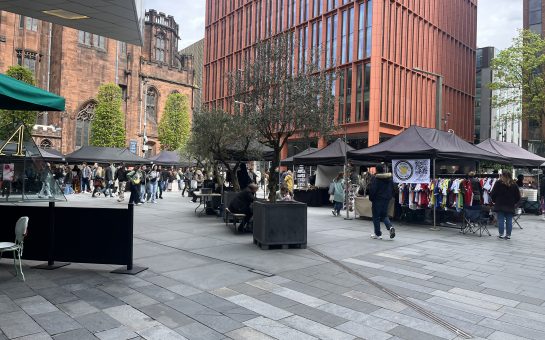Two 6000-year-old ‘halls of the dead’ have been unearthed in a ground-breaking excavation conducted by archaeologists from The University of Manchester.
The spectacular ancient finds are thought to have been constructed between 4000 and 3600 BC.
The dig took place on Dorstone Hill, near Peterchurch in Herefordshire in conjunction with Herefordshire Council, where the halls were buried within a prehistoric burial mound.
Professor of archaeology Julian Thomas, from The University of Manchester, said: “This find is of huge significance to our understanding of prehistoric life – so we’re absolutely delighted.”
The halls are thought to have been used by entire ancient communities and it is estimated that they were 70 metres and 30 metres long.
According to the team, the structures were deliberately burnt down after they were constructed with the scorched wood showing the character of the building’s structure above ground level – a UK first.
Despite the burning of the halls archaeologists have been able to conclude that in the smaller structure was a small mortuary chamber which had huge sockets to hold upright tree trunks at each end.
These massive posts would have bracketed a linear ‘trough’ lined with planks holding the remains of the dead.
“It makes a link between a house and tomb more forcefully than any other investigation that has ever been carried out,” said Professor Thomas.
“These early Neolithic halls are already extremely rare, but to find them within a long barrow is the discovery of a lifetime.”
The prehistoric burial mounds which the halls were found in are evidence of a memorialization of the dead for generations to come, according to Professor Thomas.
As well as the mounds, the site also yielded evidence of a series of later burials and deliberate deposits including a cremation burial and a pit containing a flint axe and a finely-flaked flint knife.
These objects have close affinities to artefacts found in eastern Yorkshire in the Late Neolithic (c. 2600 BC).
Dr Keith Ray, Herefordshire Council’s Country Archaeologist said that this is further proof of the site’s unique nature.
“These subsequent finds show that 1000 years after the hall burial mounds were made, the site is still important to later generations living 200 miles away – a vast distance in Neolithic terms,” he said.
“The axe and knife may not have been traded but placed as part of a ceremony or an ancestral pilgrimage.
“So we witness an interconnected community linking Herefordshire and East Yorkshire by marriage and by descent 5000 years ago.”
For more on this story and many others, follow Mancunian Matters on Twitter and Facebook.



